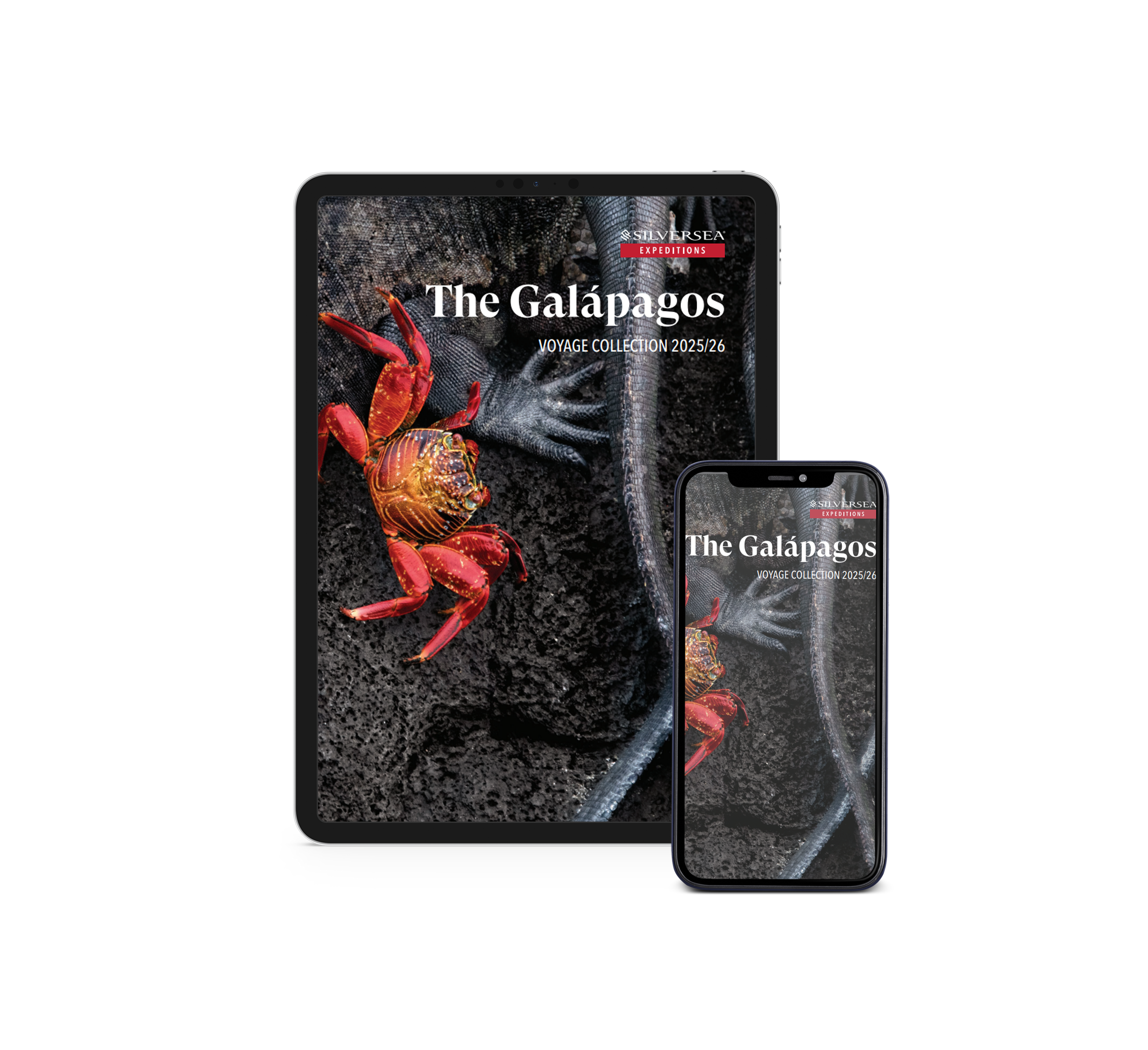CRUZEIROS ILHAS DE GALÁPAGOS
Faça parte de um mundo desconhecido
ENCONTRE O SEU CRUZEIRO
Flora e fauna, paisagens deslumbrantes, charme abundante: esta região vai transformar a sua imagem do mundo e a sua noção de viajar.
ILHAS DE GALÁPAGOS destaques
1 de 5
Explore a Ilha Fernandina. Fernandina é o mais puro dos vulcões das Galápagos, com uma enorme população de iguanas, para além de corvos-marinhos que não voam e pinguins das Galápagos.
BROCHURA SOBRE AS ILHAS GALAPAGOS

Peça uma brochura gratuita sobre as Ilhas Galapagos
Imagine uma lista de destinos de sonho e locais intactos. Fez a lista? Não se esqueceu das Galápagos, pois não? Se sim, deixe-se seduzir pela fauna e flora da ilha, pela beleza dos seus pássaros e flores… Ainda não se convenceu? Transfira o nosso catálogo online e veja no ecrã o que poderá ver em pessoa… e depois faça as malas!
Os especialistas que fazem a sua expedição
Reunimos a melhor equipe de especialistas multilíngues em cruzeiros de expedição para ajudar você a explorar e conhecer as preciosidades secretas da região como um morador local.
Veja abaixo uma seleção criteriosa de nossa equipe de expedição.
1 of 5
Viaje até aos mais recônditos recantos
Conheça os nossos destinos de fio a pavio com os artigos do nosso blogue (apenas em inglês)
QUER DESCOBRIR MAIS SOBRE AS GALÁPAGOS?
descubra maisNAVIOS COM DESTINO AS ILHAS GALAPAGOS
Silver Origin
Expedition
O navio mais elegante de sempre a viajar pelas Ilhas Galápagos. O Silver Origin foi o primeiro navio construído pela Silversea com um destino específico, e é o ponto alto de uma viagem repleta de experiências nas Ilhas Galápagos.
- TRIPULAÇÃO A BORDO90
- HÓSPEDES100
- SUITES51
- OPÇÕES GASTRONÔMICAS2
- Beauty Salon
- Fitness Centre
- Beauty Spa
- Observation Lounge
- Basecamp
- Explorer Lounge